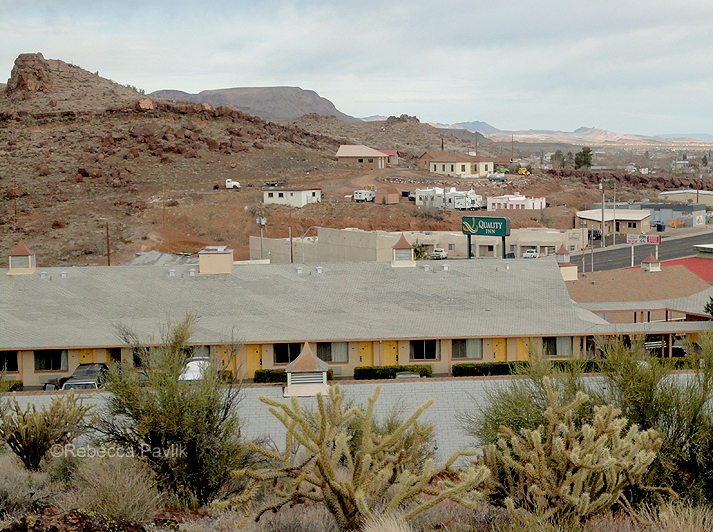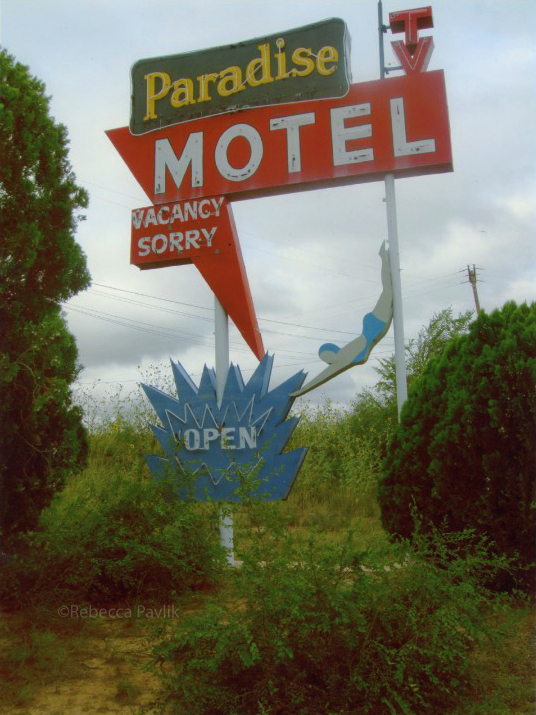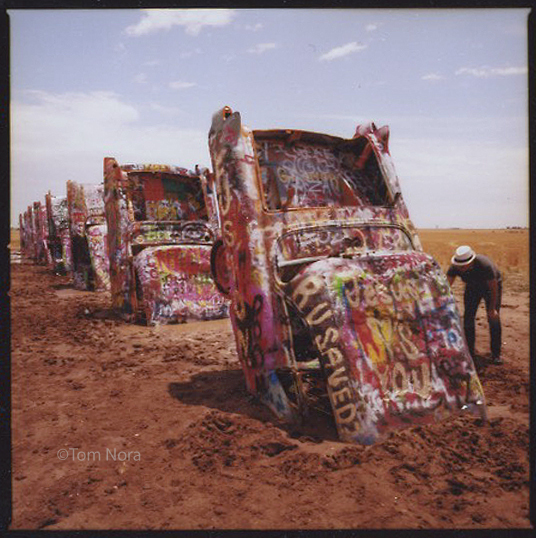Historic Route 66 conjures up nostalgic images of a more innocent America from the forties and fifties, with old neon motel signs, vintage American autos, and iconic scenery of the American West. America’s most famous road was completed in 1926 and became the country’s main east/west route, running 2,488 miles from Chicago to Los Angeles. Known as “The Mother Road,” its history, car culture, and romantic lure has inspired songs, TV shows, movies, and books.
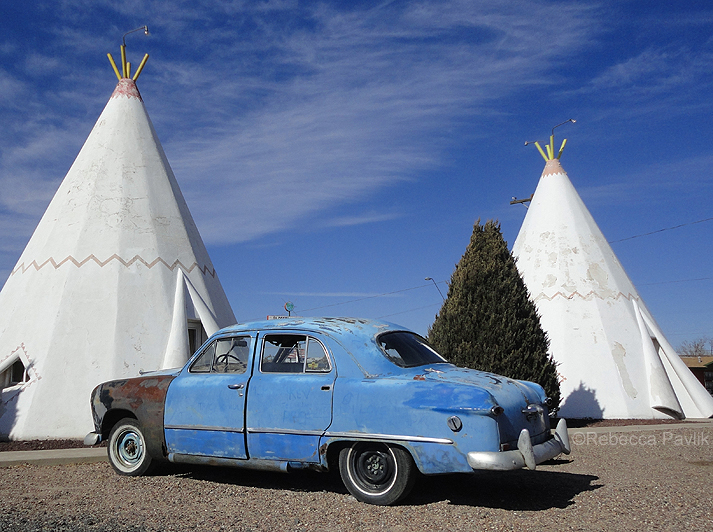
Old cars are displayed at the Wigwam Motel in Holbrook
In 1985 when the last stretch of the new interstate was finished, Route 66 was officially decommissioned. Out West, it was replaced with Interstate 40, which bypasses many of the small towns that Route 66 used to go right through, rendering many of them obsolete, struggling to survive and keep from becoming actual ghost towns. These are the best Route 66 towns – the towns whose main claim to fame now is their Route 66 heritage. They are the old railway and truck-stop towns that time forgot. Arizona and New Mexico have more than their fair share of these little retro towns, and with the American Southwest as a backdrop, what could be better!
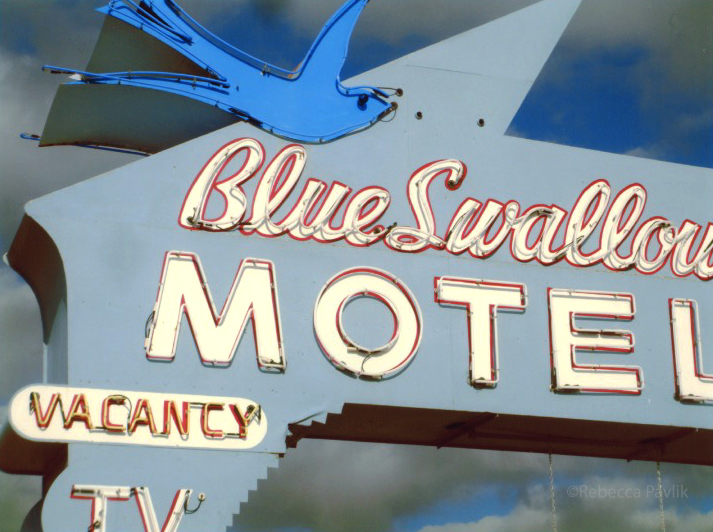
Blue Swallow Motel sign in Tucumcari, New Mexico. This motel is still open for business.
To get a good feel of Route 66, I suggest driving the scenic and well-preserved stretch, from Arizona through New Mexico, and Texas, if time allows. If you haven’t made this drive before, don’t expect to drive the entire way along the old Route 66 and find a plethora of historic sights, or even a quaint Route 66 district in each town. In fact, preserved sections are few and far between. You won’t even be driving Route 66 most of the time. The original road is barely two lanes wide and not maintained on the long stretches between towns. It simply disappears in some places and is often not well marked or easy to find. Therefore, most of your drive will be on Interstate 40.
Below I’ve listed the most popular Route 66 towns (from West to East) and attractions on what is, in my opinion, the most preserved and scenic stretch of the old route.
ARIZONA – The longest undisturbed stretch of the original Route 66 is in Arizona. If you’re coming from the West, exit Interstate 40 between Needles and Kingman, and take State Road 95 to the original Route 66 heading towards Oatman. Oatman is an authentic Old West mining town with a current population of around 2000. It’s popular with tourists for its Old West history and Route 66 nostalgia. Oatman’s wild burrows wander the streets and there’s even a Wild West gunfight show. Another authentic old Route 66 town is Kingman, founded by the Santa Fe Railroad in 1882.
With its stark desert scenery, old train depot, funky motels and cafes, Kingman feels more like a gritty truck stop town. In Kingman, check out the Historic Route 66 Association of Arizona, for history, information, memorabilia and a gift shop. From Kingman, drive east to Seligman, another interesting little town with some original structures and a Route 66 gift shop. From here, don’t take Interstate 40, instead continue along the longest remaining stretch of Route 66, which veers northwest and takes you through Peach Springs, the inspiration for the animated Pixar film Cars. With a population of just over 1000, its old buildings, hotels and gas stations remind visitors of another era.
One of the best Route 66 towns in Arizona is Williams, which many travelers miss by stopping in Flagstaff instead. Williams is a charming little Old West town with plenty of reasonably priced small motels, diners, and souvenir shops. One of Williams’ main attractions is The Grand Canyon Railway, which takes visitors from downtown Williams straight to the south rim of the Grand Canyon and back! Williams is tiny and quaint compared to Flagstaff, which is more of a college town. If time allows, I recommend driving north from Williams to see the Grand Canyon (if you don’t take the train), then driving along the south rim to Desert View and then to Cameron before heading south on the 89 back to Flagstaff. Flagstaff is the biggest town along Arizona’s stretch of Route 66, and caters as much to its Northern Arizona University students as it does tourists. The college scene keeps the small historic downtown district lively and filled with reasonably priced cafes and shops. It’s more of a real town with a lot more going on, including numerous museums, the Lowell Observatory, the Riordan Mansion State Historic Park, and a ski area. Moving on, Interstate 40 takes you to the town of Winslow, home to the gorgeous La Posada Hotel & Gardens, an architectural gem built in 1929 by the Santa Fe Railway for the Fred Harvey Company. Designed by architect Mary Colter, it’s considered a Southwest masterpiece and “America’s last great railway hotel.” Winslow is an interesting Route 66 town, with an authentic feel and worth taking a look around. Heading east, your next stop is the tiny town of Holbrook, home of the famous Wigwam Village Motel. Built in 1950, with kitschy rooms in the shape of Native American teepees and a collection of vintage autos in the parking lot, the Wigwam is an iconic Route 66 landmark that is still in operation.
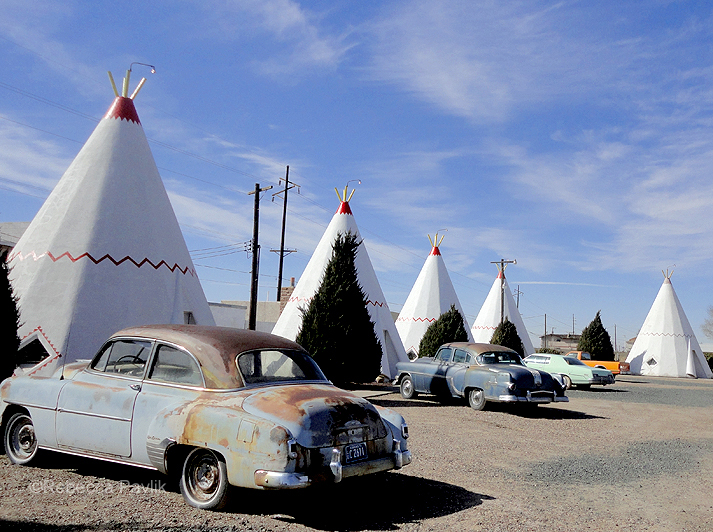
Teepee rooms at the Wigwam Motel, Holbrook Arizona
NEW MEXICO – Gallup is another Route 66 town worth exploring. Known for striking desert scenery and its proximity to the Navajo Nation and the Zuni Pueblo, it’s the place to buy Native American pottery, artwork, rugs and jewelry. Gallup’s most famous landmark is the El Rancho Hotel. Built in 1936 and listed on the National Register of Historic Places, this rustic Old West hotel is where the biggest movie stars of the 30s, 40s and 50s stayed while filming Westerns nearby. If you don’t stay the night, at least check out the hotel’s beautiful lobby (also used for filming) and have a drink at The 49er Lounge – the bar that Errol Flynn once rode his horse into!
Back on Interstate 40, for those interested in authentic Native American culture, I suggest taking a side trip to the Acoma Pueblo to the south, between Grants and Albuquerque. The Acoma Pueblo, or Sky City as it’s known, was established on top of a 367-foot mesa and is reputed to be the oldest continuously inhabited community in North America.
Albuquerque has a significant Route 66 section along what is now East Central Avenue and still plays up its Route 66 heritage! This stretch has a Route 66 diner and quite a few of the old Route 66 motels, with their cool retro neon signs. Some of the best old motels and neon signs are in a rundown part of town which is probably only good for taking photos, since most of these motels are no longer in use. Moving on, Santa Rosa is worth exploring, although it’s very small and doesn’t seem to give a hoot about Route 66 nostalgia. There are very few authentic old motels, retro neon signs, or other Route 66 references. Nonetheless, it’s an interesting old town that also has been left alone.
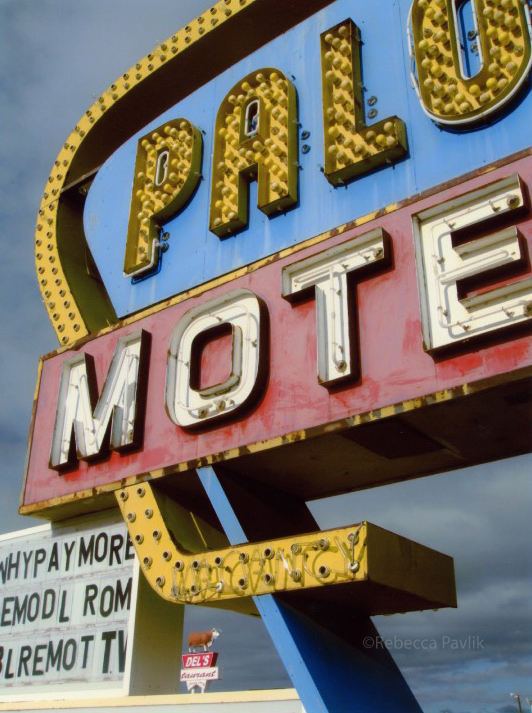
Palomino Motel in Tucumcari, New Mexico
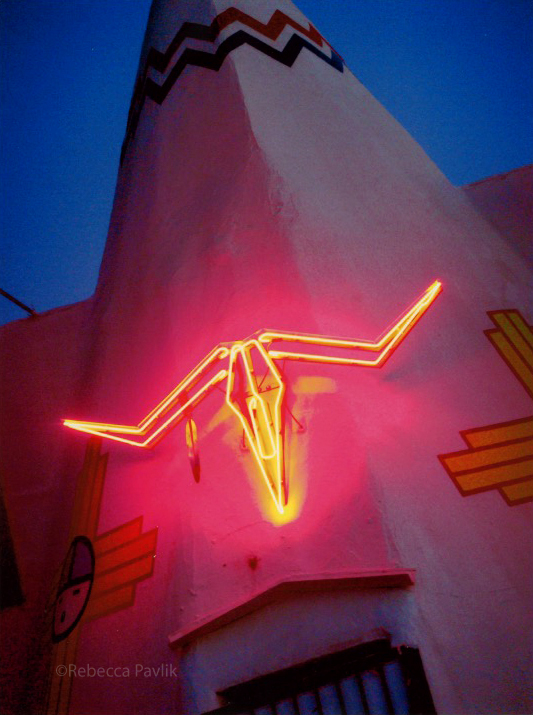
TeePee Curios Shop neon in Tucumcari, New Mexico
By far, the best town for funky old Route 66 motels, neon signs and nostalgia is Tucumcari. It’s quite small and as you can drive through the center of town, down Route 66, you’ll be surprised by the number of interesting old motels, shops, and cafes with incredible old neon signs! Several of these old hotels from Route 66’s heyday are still in operation, the most famous being the Blue Swallow Motel. From what I’ve observed, Tucumcari has more preserved old motels and shops, with their original neon signs, than any other town along this stretch – it seems truly untouched by time. It’s also a bit more gritty and authentic compared to Williams and Flagstaff. Some sections of town are a bit rundown and there’s not much to do there (no big attractions or museums), but that’s part of its charm – it hasn’t been ruined by progress. If you’re a photographer, Tucumcari should be at the top of your list.
TEXAS – This stretch of northern Texas is its shortest part, so for that reason alone, you could easily drive right through. However, if you’re coming from the west, you may just want to go as far as Amarillo, which is where you will find the strange roadside attraction known as Cadillac Ranch.
This art installation was the brainchild of rancher Stanley Marsh who collaborated with the Ant Farm, a San Francisco art collective, and consists of ten half-buried Cadillacs. It’s worth stopping and getting out of your car, as it’s much more impressive up close. In downtown Amarillo, Route 66 is now 6th Avenue and lined with antique shops and a few cute cafes. It’s great if you love antiquing, and it’s a nice place to have lunch, but there’s not much in the way of original Route 66 signage or nostalgia. One building though, The Nat, has quite a history, having once been the biggest nightclub between Denver and Dallas. Built in 1922, The Amarillo Natatorium was originally a swimming pool, then a dance hall, then a performance venue. The huge old ballroom is now used as an antique mall during the day, and is cleared out for performances in the evening!
Route 66 continues on to Chicago, but I’ll leave that stretch of highway for another time. For most of us, Route 66 is just a great excuse to take a road trip out West and discover incredible desert scenery and interesting little towns we would otherwise have no reason to visit.
I suggest not getting too obsessed with Route 66 itself (unless you are a true history buff), mainly because there aren’t big chunks of it left – just little pieces here and there – and you may end up being disappointed by the lack of preservation. Besides, there is plenty to see and do along the way that has little to do with Route 66, like the Grand Canyon. Finally, keep an open mind – many of the towns that were bypassed when Interstate 40 was built suffered extreme economic downturns and may seem a little downtrodden and rough around the edges. However, time has a way of righting certain wrongs, and now those towns, the ones left alone with the least amount of progress, have become the most popular and authentic Route 66 travel destinations.
For a list of historic sites in each Route 66 city, I suggest visiting the National Parks’ website at http://www.nps.gov/nr/travel/route66/listofsites66.html They have a nice list of historic buildings and attractions in each town.
© 2022 Rebecca Pavlik, All Rights Reserved.


